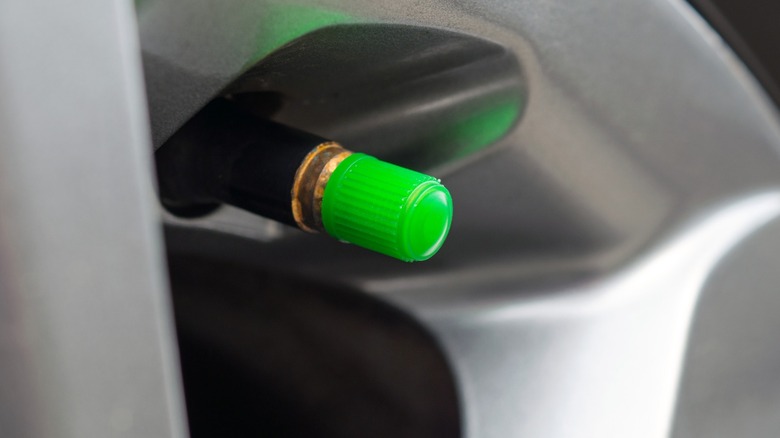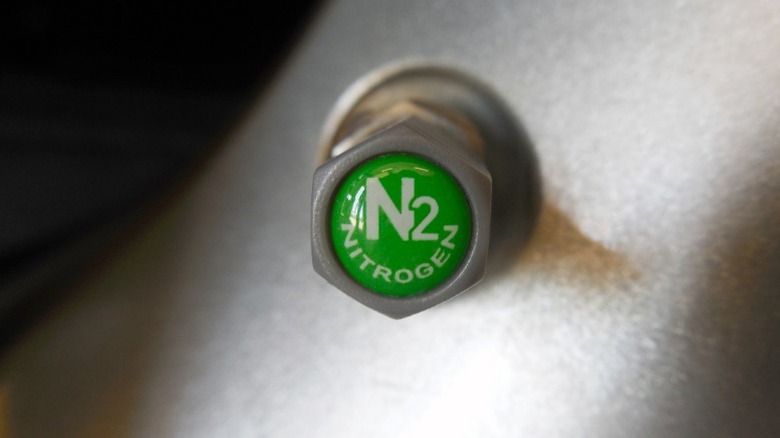What Do Green Caps On A Tire Mean?
There are a lot of different methods that people use to showcase their personalities and individual tastes on their cars. From installing things like custom license plate covers and bumper stickers to vibrant paint jobs, steering wheel covers with team logos, and more, the vehicles we drive can be great canvases for expressing ourselves. However, green tire valve stem caps are not usually one of the ways people do that.
While you can buy personalized valve stem caps for your car, those that are solid green usually have nothing to do with aesthetics. Instead, these green caps indicate that the tires are full of nitrogen in place of regular air. People choose to fill their tires with nitrogen instead of oxygen for various reasons, including the potential to maintain the correct tire pressure for a longer period of time and to help cut down on corrosion. However, if you're wondering whether nitrogen actually makes a difference and whether you should make the effort to use it in your tires, stick around. Here's what you need to know about nitrogen-filled tires and whether the gas is worth using in your car's tires.
Is it really better to fill your tires with nitrogen?
Because tires are made from rubber, they're also naturally porous or covered in very tiny holes. Over time, small amounts of air can slip through these pores, causing your tire pressure to drop slightly. However, because nitrogen molecules are larger than oxygen molecules, tires filled with nitrogen tend to experience less pressure loss over time. That said, the difference in tire pressure loss is probably imperceptible to most average drivers. During the course of a year, a tire filled with nitrogen can be expected to lose, on average, about 1.3 pounds per square inch (psi) less than a tire filled with regular air.
Another reason some people choose to fill their tires with nitrogen is the potential to stave off corrosion. In contrast to regular air, nitrogen does not trap and hold moisture. That means that filling your tires with nitrogen gas can reduce the likelihood of developing rust and corrosion on your wheels and tire pressure monitoring system (TPMS) sensors. However, like the difference in pressure loss described above, nitrogen makes a minimal difference when it comes to wheel and TPMS sensor longevity.
So, should you fill your tires with nitrogen? While there are some advantages to filling your tires with nitrogen, those minor benefits may not outweigh the cons. First, it may be more expensive to fill your tires with nitrogen gas than with air. You'll also have to find a place to get nitrogen for your tires. While many tire shops do provide this service, you may have to drive a while to find one, depending on where you live. As mentioned, most drivers probably won't notice many differences when using nitrogen, and unless it's incredibly convenient, you're probably better off sticking with regular air.

